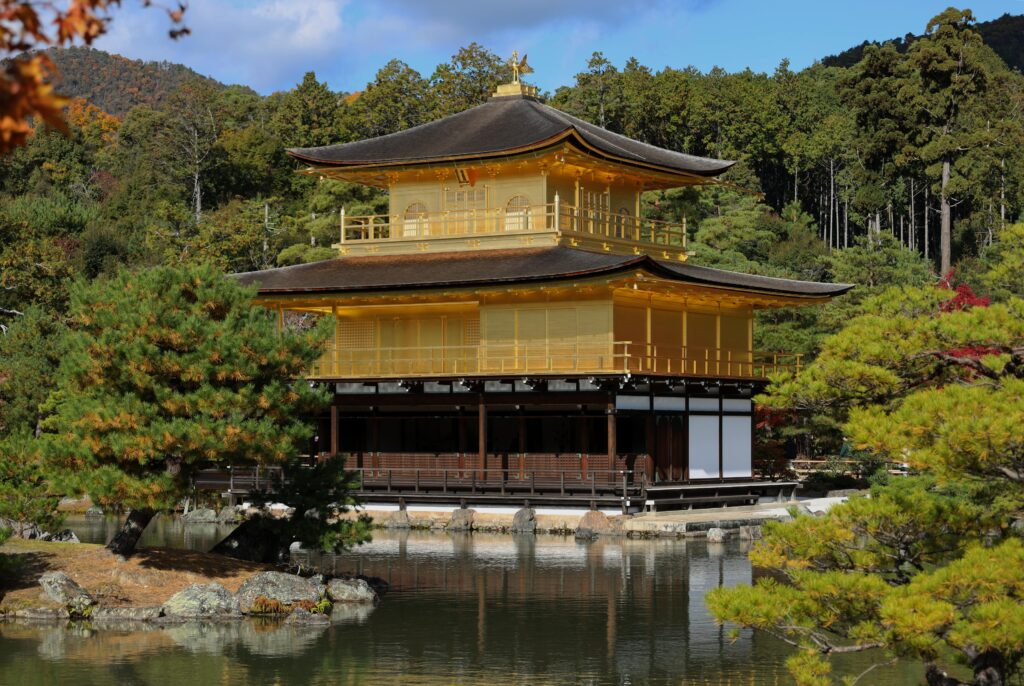Japan is a country where ancient spirituality and modern culture beautifully coexist. Scattered across the nation are some of the world’s most impressive temples and shrines historical, architectural, and spiritual treasures that transport you back in time.
Whether you’re seeking serenity, stunning photo opportunities, or insight into Japan’s religious roots, these traditional temples and shrines are must see destinations for every traveler.



1. Todai-ji Temple – Nara’s Great Eastern Temple
📍 Location: Nara
🕰️ Established: 752 AD
🎯 Must-See: Giant Bronze Buddha, Nandaimon Gate, Nara Deer Park
Todai-ji (東大寺) is one of Japan’s most significant historical landmarks and for good reason. Once the largest wooden building in the world, this ancient temple still houses the world’s biggest bronze Buddha statue, weighing over 500 tons.
Built in the 8th century during Japan’s smallpox epidemic, this UNESCO World Heritage site was a national project to gain divine protection. Over 350,000 people were involved in its construction.
🦌 Pro Tip: Walk through Nara Deer Park on your way where friendly, free roaming deer are happy to interact with visitors!
Despite fires and earthquakes over the centuries, Todai-ji has been lovingly restored and now welcomes over 2 million visitors annually.
🚆 Access: Easy day trip from Osaka or Kyoto via the Kintetsu rail lines.
2. Kinkaku-ji (Golden Pavilion) – Kyoto’s Shining Icon
📍 Location: Kyoto
🎯 Must-See: Golden Pavilion, Mirror Pond Reflections
Perhaps the most photographed temple in Japan, Kinkaku-ji (金閣寺) dazzles with its brilliant gold leaf exterior, reflecting beautifully in the surrounding pond.
Originally a 14th-century villa for a shogun, this Zen Buddhist temple is Kyoto’s top tourist draw.
📸 Visit in the early morning for the best light and reflections, and to avoid crowds.
3.Ginkaku-ji (Silver Pavilion) – Kyoto’s Serene Counterpart
📍 Location: Eastern Kyoto
🎯 Must-See: Dry Sand Garden, Mount Fuji-shaped Sand Cone
The lesser-known sister of the Golden Pavilion, Ginkaku-ji (銀閣寺), offers a more subtle and contemplative experience. Built in the 15th century as a retirement villa, it later became a Zen temple surrounded by moss gardens and artistic landscapes.
4. Tenryu-ji Temple – Arashiyama’s Zen Gem
📍 Location: Arashiyama, Kyoto
🎯 Must-See: Fall Foliage, Sogenchi Garden, Bamboo Grove
A UNESCO site with centuries of history, Tenryu-ji (天龍寺) is a peaceful retreat in western Kyoto. The landscaped gardens, originally designed in the 14th century, offer vivid seasonal beauty especially in autumn.
🍁 Combine this visit with a walk through the Arashiyama Bamboo Grove, right next door.
5. Senso-ji Temple – Tokyo’s Oldest & Most Visited Shrine
📍 Location: Asakusa, Tokyo
🎯 Must-See: Kaminarimon Gate, Giant Lantern, Nakamise Street
Senso-ji (浅草寺) is Tokyo’s most iconic temple, dating back to the 7th century. Although rebuilt after WWII bombings, it remains a sacred site and a cultural must-visit.
🎁 Shop along Nakamise Street, a historic shopping lane packed with traditional souvenirs and snacks.
📷 Visit after dark to see the temple illuminated and enjoy fewer crowds.
🚆 Closest Station: Asakusa Station
🎟️ Admission: Free
⏰ Hours: 6 AM – 5 PM (varies by season)
6. Kawasaki Daishi Temple – Hidden Gem Near Tokyo
📍 Location: Kawasaki, Kanagawa
🎯 Must-See: Five-Story Pagoda, Shopping Street
This impressive temple complex near Haneda Airport offers a quieter experience. Kawasaki Daishi (川崎大師) is known for its healing rituals and vibrant festivals, and the lively approach street is a great place to try local treats.
7. Hase-dera Temple – Kamakura’s Hilltop Haven
📍 Location: Kamakura
🎯 Must-See: 9-meter Wooden Kannon Statue, Sea View
Hase-dera (長谷寺) is perched on a hillside with sweeping views of Sagami Bay. The highlight is the massive Kannon statue, one of Japan’s tallest wooden sculptures. The temple gardens are peaceful year-round.
🗿 Just a short walk away is the famous Great Buddha of Kamakura.
8. Arakura Sengen Shrine & Chureito Pagoda – Fuji Views
📍 Location: Fujiyoshida, Yamanashi
🎯 Must-See: Chureito Pagoda, Mount Fuji View
This postcard perfect shrine offers one of Japan’s most iconic views the red Chureito Pagoda with Mount Fuji in the background. Ideal during cherry blossom or autumn leaf seasons.
9. Fushimi Inari Shrine – Kyoto’s Thousand Torii Gates
📍 Location: Southern Kyoto
🎯 Must-See: Orange Torii Gates, Mountain Trails
Fushimi Inari Taisha (伏見稲荷大社) is one of Japan’s most visited shrines, famous for its endless rows of vibrant torii gates. These gates wind through a forested mountain trail that’s both spiritual and scenic.
🧭 Go early to beat the crowds and get clear shots of the gates.
10. Kiyomizu-dera Temple – Kyoto’s Cliffside Wonder
📍 Location: Eastern Kyoto
🎯 Must-See: Main Hall Balcony, Orange Pagoda
Kiyomizu-dera (清水寺) is one of Kyoto’s most beloved temples, offering panoramic views of the city. Built without nails, the wooden main hall is an engineering marvel.
Best visited during fall or cherry blossom season, but it’s stunning all year.
11. Byodo-in Temple – Uji’s Hidden Jewel
📍 Location: Uji (between Kyoto & Nara)
🎯 Must-See: Phoenix Hall (on the 10 yen coin)
Byodo-in (平等院) is a tranquil riverside temple with deep roots in Pure Land Buddhism. Its iconic Phoenix Hall is even featured on Japanese currency and yes, there’s a Hawaiian twin of this temple!
12. Yasaka Pagoda – Kyoto’s Timeless Silhouette
📍 Location: Higashiyama, Kyoto
🎯 Must-See: 5-Story Pagoda Street View
Towering over Kyoto’s old town, Yasaka-no-to Pagoda (八坂の塔) is a scenic highlight of the preserved Higashiyama district. You can also climb partway up the pagoda for a unique angle.
13. Kamakura Daibutsu (Great Buddha) – Bronze Giant
📍 Location: Kamakura
🎯 Must-See: Outdoor Buddha Statue
This monumental bronze statue of Buddha is a national treasure and the symbol of Kamakura. It survived a 15th-century tsunami that destroyed its temple and now sits under the open sky as a peaceful reminder of resilience.
🎎 Tips for Visiting Temples & Shrines in Japan
- Be Respectful: Keep noise to a minimum, especially inside buildings.
- Shoes Off: You’ll often need to remove your shoes inside temple halls.
- Photography: Usually fine outdoors, but check signage before photographing interiors.
- Fees: Entry is often free, but some spots charge a small fee (usually under ¥500).
- Kimono Friendly: Renting a kimono is welcomed and adds to the experience don’t be shy!
🍂 Best Time to Visit Japanese Temples
🌸 Cherry Blossom Season: Late March to early April
🍁 Autumn Foliage: Mid to late November
Aim to visit early morning or late afternoon to avoid crowds and capture the best lighting especially if you’re hoping for mirror-like pond reflections at places like Kinkaku-ji or Byodo-in.
✨ Conclusion
From ancient wooden wonders to photogenic pagodas and forest-lined shrines, Japan’s temples offer a rich blend of beauty, history, and serenity. Whether it’s your first time in Japan or your fifth, exploring these spiritual sites will leave a lasting impression.
